Who gets taken to court?
Taking a party to court is NRAR’s response to the most serious breaches of water laws. We have commenced 38 prosecutions since we began in 2018.
Prosecutions are a key part of NRAR’s duty. They maintain public confidence in the enforcement of water laws in NSW. They are also an important part of building a culture of compliant water use across the state.
The decision to prosecute is not taken lightly. A decision to commence a prosecution must be endorsed by the NRAR Board after independent legal advice is obtained.
Cases may be heard in a local court or the Land and Environment Court for the most serious matters,.
All of our concluded prosecutions are tabled in our public register.
Active prosecutions
We usually have a number of active prosecutions in court. We issue a media release at the commencement of any prosecution. To find out more about them, visit our news page. You can also click on the pin drops on the interactive map below. They show basic information on our active prosecutions and the LGA they are in.
Concluded prosecutions
In this section we summarise concluded court cases. We indicate what the offences were and the outcomes. The goal is to educate water users on the sort of activities that could lead to prosecution, including the costs involved. Click on the case studies below.
Of the 32 cases we have concluded, 23 have resulted in convictions. Two were dismissed. One was found not guilty. Five were withdrawn. And one was withdrawn and addressed as an enforceable undertaking .
Case study: Huge fines for illegally tapping irrigation pipeline
Land and Environment Court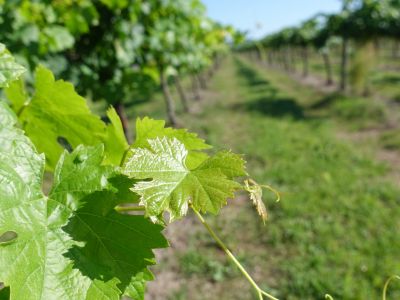
Concluded March 2024
Offence: A former Wentworth region wine company and its manager pleaded guilty to 2 offences of illegally tapping into the Western Murray Irrigation (WMI) pipeline contrary to section 342 of the Water Management Act 2000 (WMA) and taking water from it contrary to section 343 of the WMA. The offences took place at two separate vineyards between 2016 and 2019 and involved illegal take of just under 365ML of water.
Evidence presented to the court detailed how pipes of various sizes had been used to tap into the main supply pipeline and then bypass metering equipment. The illegal tapping pipework was buried underground and allowed unmetered water to be taken and used for irrigation.
Outcome: The company was convicted and fined $326,500, while the former vineyard manager was convicted and will pay $172,500. The defendants agreed to pay costs of $95,000 to NRAR.
Significance: In the judgment handed down in the NSW Land and Environment Court, her Honour Justice Duggan said the conduct of the offenders was "intentional", and she was "satisfied beyond reasonable doubt that the offences were committed to the financial benefit of Jindalee Wines”. She also found that the offences formed "part of a planned or organised criminal activity", which took place over a long period.
Case study: Failing to act on a letter about a bore limit sets irrigator on path to fine
Land and Environment Court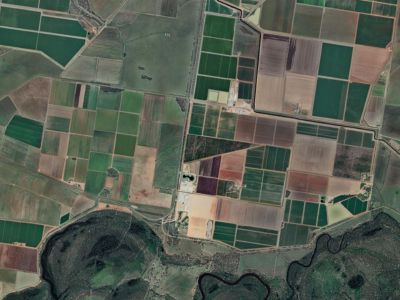
Concluded April 2023
Offence: A Riverina farmer pleaded guilty in the NSW Land and Environment Court to a single offence under the NSW Water Management Act, related to pumping 1,351.1 ML of water more than the bore extraction limit set in their licence approval. The court heard how even though he had received a letter about the extraction limit on the bore, he failed to act on it.
Result: The farmer was fined $56,000 for the offence and had to pay $70,000 in court costs.
Harm: In her judgment Justice Rachel Pepper accepted that the breach was “inadvertent”. However, she said that by taking a greater volume of water than they were legally entitled to under the bore extraction limit for their licence, the owner of the mixed cropping operation had "undermined" the objectives of water regulation and "frustrated" the intent of the Water Management Act.
Case study: Costly result after bore extraction breach
Land and Environment Court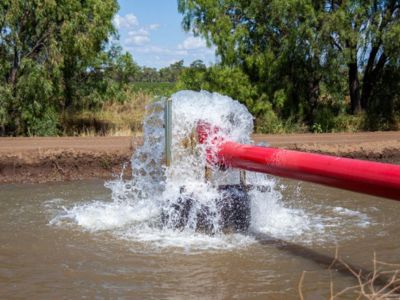
Concluded March 2023
Offence: The owner of a mixed cropping enterprise near Griffith pleaded guilty to a single charge of breaching the conditions of his licence approval to over-extract 97.5 megalitres of water from a bore during a period of drought in 2019-20.
Result: The irrigator was ordered to pay a fine of $26,250 and $20,000 in costs. They were also ordered to publish details of the conviction in The Land and The Irrigator publications.
Harm: While the court accepted that the defendant’s breach was inadvertent, it found that the over-extraction had an effect on the groundwater pressure in the aquifer and would have resulted in additional costs for neighbouring water users if they pumped water during the period of offending. In handing down her decision Justice Sarah Prichard SC said she found "beyond reasonable doubt, that the defendant’s over-extraction posed an increased risk of harm to the environment".
Case study: Irrigator fined for taking water from at-risk groundwater source
Land and Environment Court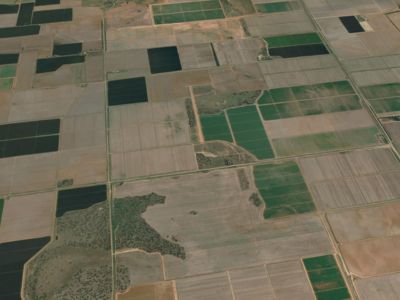
Concluded March 2023
Offence: The owner of a property, which grows grapes, cotton, wheat, canola, barley and corn southwest of Griffith pleaded guilty to five charges in the NSW Land and Environment Court. Four of the charges concerned breaches of bore extraction limits and one was for taking water not in accordance with an access licence allocation. The offences involved the over-extraction of 7,352.97 ML of water.
Result: The irrigator was convicted and fined a total of $156,250. He was also ordered to pay costs of $60,000 and to publish details of the conviction in The Land and The Irrigator publications.
Harm: In handing down her decision Justice Rachel Pepper remarked that the offending posed a "real risk of environmental harm" and that it was up to licence holders to know their licence conditions and follow them. The court's decision highlighted the risk posed to fragile underground water resources when water laws were not followed.
Groundwater levels at the time almost reached the historical lows that were observed during 2007 to 2009 at the end of the Millennium drought - the worst drought on record in southeast Australia.
This aquifer is considered to be "at-risk" from high water demand, and that means all water users taking licensed water from the groundwater source must have a meter, regardless of infrastructure size.
Case study: Irrigator faces huge fines for taking water when meter was broken
Land and Environment Court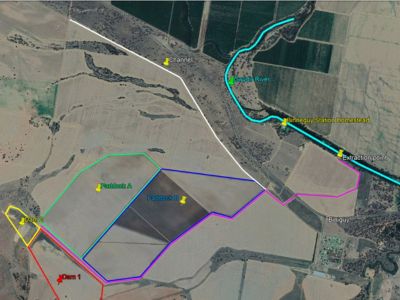
Concluded January 2023
Offence: A Gwydir River irrigator pleaded guilty in the NSW Land and Environment Court to two charges of knowingly taking water while metering equipment was not working. The company which operates Binneguy Station in Northern NSW also pleaded guilty to building and using a 610ML dam without approval.
Result: The company, Henry Payson Pty Ltd, was fined a total of $353,750. For the first count of knowingly taking water while the meter was not working, the company was fined $175,000. For the second count, a further $125,000 fine applied. For building the dam without approval the fine was $43,750, and a further $10,000 fine for using the dam. The company was also ordered to pay NRAR’s legal costs and cover the cost of the investigation.
Harm: In handing down her judgment, Justice Rachel Pepper said the offences caused “substantial harm to the integrity and consistent administration of the water management scheme in NSW". She said water users were required by law to accurately meter their water to preserve the integrity and sustainability of water sharing plans and water laws. Justice Pepper also said accurate water metering ensured that appropriate limits could be set on the amount of water able to be extracted and to properly charge water users for that extraction.
Case study: Using a dam without a water supply work approval
Bathurst Local Court
Concluded August 2022
Offence: A Bathurst leaseholder pleaded guilty to using a dam without a water supply work approval.
Outcome: The leaseholder was convicted of one offence against the WM Act 2000for using a dam without a water supply work approval. He was fined $6,500 and ordered to pay half of the fine to NRAR, with additional legal costs of $4,500.
Harm: The offence occurred in early 2020, during a time when the area was affected by intense drought and bushfires, which increased the potential harm to the environment and impact on other water users.
Magistrate Ellis acknowledged that although the leaseholder was not responsible for weather events, she hoped he would understand why the water laws are in place, noting the lack of water in 2020. Her Honour noted that Australia is the driest continent and that there is now a greater appreciation in the public mind that water is a limited resource.
Want to know the rules?
Dams, other than harvestable rights dams, mostly require a water access licence, a water supply work approval, and a water use approval.
Access to water in NSW is controlled by water access licences and approvals, unless an exemption applies (such as under basic landholder rights, which can include harvestable, stock and domestic and native title rights). This system ensures water users, and the environment, get a fair share.
Works that are constructed to store water that is taken under licence, such as dams, need approval to ensure they don’t harm water sources or the animals and plants that are dependent on them.
Approvals are issued in line with the associated water licence to ensure works don’t affect access to water by other water users.
It is an offence to construct or use water supply works without an approval.
Find out more about water access licences and water supply work approvals and which agency you should contact to obtain a licence and/or approval if needed or find out more about NRAR’s regulatory response to non-compliance.
Learn more about harvestable rights on the department's website.
Case study: Landowner and contractor held to account
Tenterfield Local Court
Concluded June 2022
Offence: A Queensland-based earthmoving company and a landowner who contracted it have been found guilty of building several unlawful bores and using them to take water unlawfully during severe drought. The landowner was convicted of one offence of using water without approval and two offences of constructing or using a bore without approval. The earthmoving company plead guilty and was convicted of four offences relating to the unlawful bores.
Outcome: The landholder faces $23,000 in fines and was also ordered to publish their offences in the local media. The contractor received a fine of $8,000 for one of its offences and no financial penalty for the other offences. Both were ordered to make payments to cover NRAR's legal costs, with the landowner contributing $25,000 and the company a further $15,000.
Harm: What we do in and around waterways can harm the environment. Approvals are granted after a robust environmental assessment has been completed and often conditions are applied to protect our watercourses. Constructing bores and other water works without an approval can have negative consequences for the environment.
The magistrate acknowledged the harm caused to other water users and the environment when water is taken unlawfully during severe drought.
Want to know the rules?
Works used for taking water from an aquifer, such as pumps and bores, are termed ‘water supply works’.
Approvals are needed for these works to ensure they don’t harm water sources or the animals and plants that depend on them. Approvals also ensure the works don’t affect access to water by other water users by setting out conditions for the construction and use of the works.
To minimise potential impacts of water extraction, licenced water take also needs approval for the intended use. The water use approval will often be issued in combination with a water supply works approval.
Overall, the holder will be approved to use specific works, for specific purpose at a specific location.
It is an offence to construct or use water supply works without an approval or to use water without, or for purposes other than those authorised by a water use approval. Visit the WaterNSW website to learn more about water use and water supply work approvals.
Case study: Unauthorised dams and vegetation clearing endangers local ecology
Land and Environment Court
Concluded April 2022
Offence: A Lane Cove based company was found guilty of four offences under the Water Management Act. This included building two unauthorised dams and clearing vegetation which also contained an endangered ecological community. The offences took place between 2016 and 2020 in and around Station Creek and its tributaries at Tea Gardens in the Port Stephens area.
Outcome: For the removal of vegetation and endangered ecological community the company was fined $64,600. For clearing vegetation and depositing material within 40m of a water course it was fined another $57,000. A further fine of $64,600 was imposed for constructing an unauthorised dam on a watercourse. The company was fined an additional $64,600 for building an illegal dam on another stream at the same location. As well as the fines that totalled more than $250,000, the landholder was ordered to reform a spillway to replicate a natural channel and slow water flow. They must also do a vegetation management plan approved by NRAR and put into action within three months.
Harm: The court found that the landholders had "sought to avoid" regulations designed to protect water sources and waterfront land. The illegal activities negatively impacted on tributaries of Bundabah Creek which is part of the North Arm Cove Sanctuary Zone of the Great Lakes Marine Park. About six hectares of Swamp Sclerophyll Forest were cleared or flooded by the activities. This type of forest is listed as an endangered ecological community at very high risk of extinction in NSW.
Want to know the rules?
At its simplest, the term waterfront land means the bed of a waterway and the land 40m from the mean high bank. Undertaking work on waterfront land can threaten the health of the waterway, putting ecosystems and downstream water users at risk.
Work on waterfront land that could alter water flows or lead to erosion is defined as controlled activity and requires prior approval. Examples of controlled activities would be construction of retaining walls, buildings or crossings. Works that involve digging or depositing of materials, channel realignment and sand and gravel extraction are other examples.
Approvals will contain conditions to minimise impacts on the waterway and adjoining land. It is an offence to carry out controlled activities without an approval.
If any works (approved or not) are found to adversely affect the capacity of the waterfront land to hold or carry water, individuals can also be charged under separate rules for causing harm.
Find out more about controlled activity approvals and find the e-tools that may help you.
Case study: Pumping with faulty metering equipment
Land and Environment Court
Concluded April 2022
Offence: A Brewarrina farmer pleaded guilty to two offences under the NSW Water Management Act. The offences were breaching the conditions of their water access licence and pumping water while the water meter was not working.
Outcome: The licence holder was ordered to pay a total of $57,000 in fines, plus $135,000 in legal costs and to publicise the offending in several local, regional, and metropolitan digital and print publications.
Harm: In handing down her findings to the NSW Land and Environment Court, Her Honour Justice Pepper said the landholder's offending conduct had compromised the accuracy of the metering system for the water source, had caused actual harm to the regulatory regime and had undermined public trust in the water management system.
Want to know the rules?
Other than with an exemption, such as for stock and domestic or native title rights, access to water in NSW is controlled by water access licences and approvals. This system ensures water users, and the environment, get a fair share.
Your water access licence/s will specify the quantity and source of your entitlement. Your approval states how water can be taken, stored, and used.
Licences and approvals also include conditions that must be followed. For example, some may say that water taken must be monitored and recorded or when you must stop taking water.
Although the non-urban water metering regulation is being rolled out gradually across NSW, some approvals already require pumps to be fitted with meters, that will accurately record your water take. Accurate measurement ensures everyone gets their fair share and has economic and efficiency benefits on farm.
It is an offence to not comply with the conditions on a water access licence or to take water when the meter is not working as it should be.
Case study: Coal mine takes water without licence
Land and Environment Court
Concluded November 2021
Offences: A coal mine at Maules Creek was convicted of a breach of section 60A(2) of the Water Management Act 2000 for taking water without an access licence over a three-year period between 2016 and 2019.
Outcome: The coal mine was ordered to pay a fine of $200,000, to publish details of the judgment in a range of media outlets and to pay some legal costs.
In addition to the court judgment, the coal mine entered into an enforceable undertaking with NRAR which requires it to take a range of actions including decommissioning a dam and updating its biodiversity management plan. Read about the details here.
Harm: Water is a finite resource which must be managed effectively and there needs to be compliance so that everyone gets a fair share. Maules Creek captured an estimated 1000 megalitres of clean water runoff from major streams on its site. This runoff should have been diverted to environmental flows.
Want to know the rules?
Water resources must be protected and other than exemptions, such as for stock and domestic or native title rights, access in NSW is controlled by the issue of water access licences to ensure all users get fair access. If a user takes water that has not been allocated to them, there may be less water available for other users downstream.
It is an offence to take water without a licensed entitlement. Find out more about water access licences.
Case study: Narrabri water take over three-year period
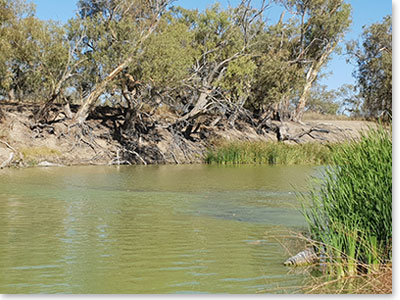 Narrabri Local Court
Narrabri Local Court
Concluded November 2021
Offences: A Narrabri based landholder was convicted of three offences for exceeding the extraction limit attached to their works approval by more than 1200 megalitres (ML) over a three-year period (2017-2020).
The amount of water taken could fill 480 Olympic-sized swimming pools.
Outcome: The defendant pleaded guilty and was ordered to pay a total fine of $10,000 ($3000 for the first offence, $5000 for the second, and $2000 for the third).
In addition to the fines, the magistrate made a publication order and directed the defendant to pay legal costs of $9,476.20.
Harm: Water is a finite resource which must be managed effectively and there needs to be strict compliance with the regulatory scheme.
The Court found the water take occurred over an extended period of time and during a severe drought. It also included accessing the Lower Namoi Groundwater Source which is at-risk due to declining water levels.
Want to know the rules?
To take water in NSW you may need a water access licence and water supply works or use approval, unless you have a basic landholder right or specific exemption for example, stock and domestic or native title rights. Water access licences and works approvals come with specified conditions to protect water sources, ensuring all users get fair access.
Some bore approval conditions include extraction limits that will override the overall water access entitlement provided by a licence, particularly where there might be vulnerabilities, such as slow recharge rates, ground water dependant at-risk ecosystems or volume of other subscriptions to the same source.
It is an offence not to follow approval conditions by exceeding extraction limits.
Find out more about water supply work approvals.
Case study: Murrumbidgee landholders exceed bore extraction limits
Griffith Local Court
Concluded August 2021
Offence: Murrumbidgee landholders Scott and Anita Hogan have been found guilty of exceeding bore extraction limits during a severe drought. The landholders were found to have over-extracted more than 500 megalitres from bores on their Coleambally property - an amount of water that could fill more than 200 Olympic-sized swimming pools. The water was taken from the Lower Murrumbidgee Deep Groundwater Source which is classified as at risk from high water demand.
Outcome: The pair have been ordered to pay fines totalling $17,000 and court costs of $5,274
Harm: Groundwater is an unseen water source. If groundwater is taken faster than it is being replaced or ‘recharged’ it can lead to long-term problems for the communities, enterprises, and ecosystems that rely on this water. These systems can be very ancient, and damage can take years to recover. In this case, the water was taken during severe drought, with likely negative impacts on other water users
Want to know the rules?
Water is a finite resource on which communities, industry and the environment depend. There are limited exemptions for basic stock and domestic use, and for native title rights. Beyond these basic rights, water access in NSW is controlled by access licences and conditions. These protect the resource, and ensure all users get a fair share.
The rules can be complex in some cases. For example, some bores have a specific extraction limit. This means that no matter what the water user’s overall water entitlement may be, the limit on that bore remains and must not be exceeded. It is important to fully understand all the conditions of your water licence and follow them.
Underground water sources are often fragile and may take many years to recharge. It is important to manage the demands on these systems so that communities, environment, and industry can get a fair share of the limited supply. It is an offence to contravene approval conditions, by exceeding bore extraction limits.
Find out more about water supply work approvals, or about how we respond to breaches of the rules.
Case study: Illegally pumping water from endangered ecosystem
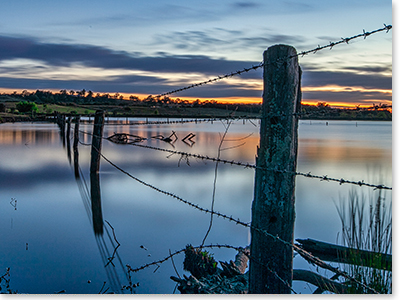 Parramatta Local Court
Parramatta Local Court
Concluded August 2021
Offences: A Freemans Reach market garden operator pumped water without approval from Bushells Lagoon between October 2018 and October 2020. The lagoon, in Hawkesbury, is environmentally sensitive because of its significant birdlife.
The company pleaded guilty to:
- 10 charges of taking water otherwise than in accordance with a water supply work approval, an offence under section 60D of the WM Act
- one charge of failing to comply with a notice, an offence under s340A
- one charge of contravening a direction to stop taking water, an offence under s336C.
The director of the company also pleaded guilty to two charges of taking water otherwise than in accordance with a water supply work approval, an offence under s60D of the WM Act.
Outcome: The Court fined the company a total of $21,600 ($1600 for each of the 10 charges, and $3200 and $2400, respectively, for the remaining two charges). It also ordered the company to pay $24,630 in legal costs.
The Court fined the company director $1600 for the two offences he pleaded guilty to.
The Court ordered the company to remove the illegal pump under s353B of the WM Act and to publish the outcome of the case in the Hawkesbury Gazette and the Chinese Daily Herald within 28 days.
Harm: Bushells Lagoon is classed as an endangered ecological community under the Threatened Species Conservation Act 1995.
Cumberland Bird Observers Club has recorded sightings of 133 bird species at the lagoon, including waterfowl, pelicans, black swans, ibis, egrets, falcons, kites, sea eagles, spoonbills, cockatoos, rosellas, corellas, swallows, several duck species, doves, wrens and migratory birds.
Want to know the rules?
It is important to avoid extraction of water in areas where there might be vulnerabilities, such as slow recharge rates near at-risk ecosystems. Extraction of water in a sensitive area can lead to significant environmental impacts through the lowering of water levels.
The NSW water access licence system provides a means to protect sensitive water sources by placing controls on the location of works for the extraction of water on a water source.
It is an offence to take water from an extraction point that isn’t nominated on an access licence.
When NRAR finds water being taking outside of the licence or approval conditions, we may serve a statutory direction for the water take to cease. It is an offence to not comply with such a direction issued by NRAR.
During an investigation an authorised officer may issue a statutory notice requesting records or information to assist with the investigation. It is an offence to not comply with the notice.
Find out more about water access licences or visit NRAR’s regulatory response to non-compliance.
Case study: Landowner and contractor prosecuted for waterfront works
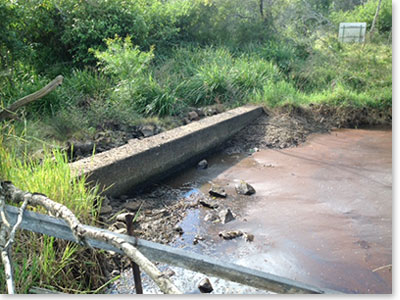
Deniliquin Local Court
Concluded June 2021
Offence: A landowner and a contractor constructed an overbank access ramp and concrete pad without approval, did not comply with the conditions of an existing controlled activity approval and did not comply with a direction to remediate the site. The works were carried out on the Murray River at Moama.
Outcome: In sentencing, the magistrate said the fine needed to be substantial enough not to act as a mere licence fee for a criminal activity. He also said the court’s message was that those wishing to develop natural resources such as the Murray River must obtain the appropriate approvals and comply with directions, and that if they did not, substantial penalties would apply, and rectification would be ordered.
The landowner was fined a total of $27,000 across five charges. He was also ordered to pay $11,000 in legal costs, ordered to publish the details of the case in the Border Mail, and remediate the site by revegetating the land and removing the unlawful overbank access ramp and concrete pad.
The contractor was fined $11,000 for not complying with the conditions of an approval in undertaking the works (even though he was not the holder of the approval) and required to pay $9000 costs.
Harm: The unlawful works impacted the Murray River and its commercial and recreational users. The additional fill could lead to extra sediment in the river, and the failure to comply with the vegetation management plan could result in further instability of the banks, leading to further erosion and sediment in the river. The vegetation requirement was to ensure there was no more than minimal harm associated with the works and was an important environmental protection measure.
Want to know the rules?
Works on waterfront land (called controlled activities) can interrupt the natural flow of water, potentially impacting users up and down stream. When a controlled activity approval is issued it will detail conditions that must be met during the work to ensure potential impacts are controlled or limited.
It is an offence to carry out controlled activities without an approval or to contravene the conditions issued. Find out more about Controlled Activity Approvals and how waterfront land is defined, or find out more about NRAR’s regulatory response to non-compliance.
Case study: Unlawful water take on border
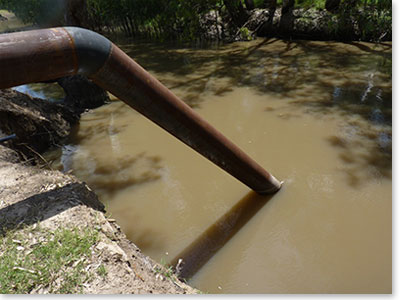 Land and Environment Court
Land and Environment Court
Concluded November 2020
Offence: A vineyard owner in Wentworth Shire in the state’s far south west pleaded guilty to eight charges of unlawful water take. A total of 1378ML of water was taken from the Murray River between April 2016 and March 2019.
Outcome: The magistrate noted that there could be no doubt that the offences were committed deliberately by the defendant. The defendant had previously been issued a stop-work order and penalty notice in 2015 for similar conduct.
The defendant was fined $131,250, ordered to pay court costs and publish a notice in The Land and the Sunraysia Daily about the judgment.
Harm: NRAR conceded that no direct harm to the environment was occasioned by the offending, but that there was likely harm caused by the unlawful taking of that amount of water during a drought as it could adversely impact other water users’ rights to take water. This would then adversely affect the general allocation of water in the system, as well as harm the regulatory system.
The Court rejected the evidence of likely harm but agreed there was harm to the regulatory system.
Want to know the rules?
Water is a finite resource and other than exemptions, such as for stock and domestic or native title rights, access in NSW is controlled by the issue of water access licences to ensure all users get fair access. If a user takes water that has not been allocated to them, there may be less water available for other users downstream.
Users must ensure they have taken the steps to secure a sufficient allocation before they take the water.
It is an offence to take water without a licensed entitlement. Find out more about water access licences or access the Water NSW Water Accounting System (iWAS), where water allocations must be purchased prior to being used.
Case study: Huge fine for unlawful works
 Land and Environment Court
Land and Environment Court
Concluded September 2020
Offence: A Moree company operating in the Brewarrina Shire constructed and used a channel to convey water without approval.
The unlawful channel, constructed in 2015, was approximately two kilometres long and 30 metres wide. It was allegedly conveying water pumped from the Macquarie River.
Outcome: The magistrate noted that this was a substantial cotton-growing enterprise which had constructed unlawful works as part of its business activities, so a strong educational message of deterrence needed to be sent to other commercial water users.
The company was fined a total of $252,000 and was required to publish a public notice outlining the judgement in both The Land and the Moree Champion. The company has appealed the severity of the fine to the Court of Criminal Appeal.
Harm: There was no evidence of environmental harm associated with the construction of the channel. Constructing unlawful works without approval does however harm the integrity of the regulatory system established by the Water Management Act 2000. His Honour Justice Moore stated:
“The fundamental impact of the company’s construction and use of the channel without consent is the undermining that this effects to the overall regulatory scheme for the management of water resources pursuant to the Water Management Act. This undermining of that regulatory scheme, by the construction of such a significant structure as well as its subsequent use, inevitably gives rise to the necessity to consider, as later discussed, matters of general deterrence as well as the need to denounce and punish the company for its unlawful breaching of the regulatory regime.”
Please note this matter is currently under appeal.
Want to know the rules?
Works used for taking water from a river, lake or aquifer are termed ‘water supply works’ and include pumps, water bores, dams, weirs, irrigation channels, banks and levees.
Approval are needed for these works to ensure they don’t harm water sources or the animals and plants dependent on them. Approvals also ensure the works don’t affect access to water by other water users by setting out conditions for the construction and use of the works.
It is an offence to construct or use water supply works without an approval. Find out more about water supply work approvals and which agency you should contact to obtain an approval if needed.
Case study: Disregard for rules on South Creek
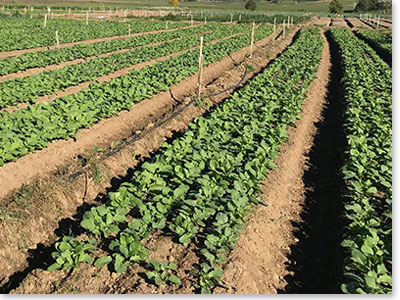 Windsor Local Court
Windsor Local Court
Concluded August 2020
Offence: A Mulgrave market gardener was found guilty of five breaches of NSW water laws relating to taking water without a licence, using water without or not as authorised in an approval, contravening terms and conditions of an approval, using a pump without approval and failing to comply with a direction to stop taking water. All offences were conducted on South Creek.
The market gardener had already been fined three times by other water regulation entities but had continued to take water without a licence. His disregard for the law and the severity of the breaches were the reasons the decision was made to prosecute.
Outcome: He was fined a total of $9900 and ordered to pay professional/legal costs of $4000 and ordered to publish details of the case in the Daily Chinese Herald and the Hawkesbury Gazette. His fines reflected a 25 per cent discount for an early guilty plea.
Harm: The Prosecutor argued that there was unauthorised take of South Creek of between 4-5.6ML outside the volumes prescribed in the Water Sharing Plan. This would lead to likely harm to sustainability of environmental health of the water source. The conduct could also impact on downstream users of South Creek and environment due to reduced flow and water availability.
Want to know the rules?
Water supply work and water use approvals are required to take and use water for many purposes, for example a pump used to extract water from the river to irrigate a commercial crop would need a water supply works and water use approval, usually given as a combined approval.
It is an offence to use water without approval, or to construct or use a water supply work in a way that is different to what was approved.
All approvals include conditions designed to minimise impacts of the works and intended use on the water source and other users. It is an offence to not comply with approval conditions.
When NRAR finds unapproved works or water take etc, we have a range of statutory directions that can be issued to bring the activity into compliance, for example stopping the use of water. It is an offence not to comply with a direction issued by NRAR.
Find out more about water supply works and water use approvals.
Case study: Company, manager and property owner all prosecuted
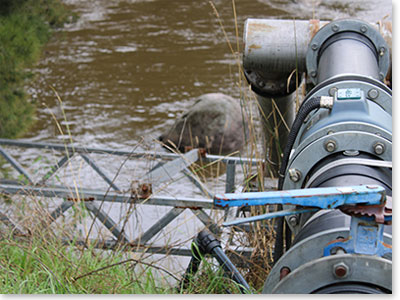 Ballina Local Court
Ballina Local Court
Concluded July 2020
Offence: A macadamia nut nursery company, its manager and the property owner were all found to have unlawfully taken water in the Ballina area, and the company and manager were also found to have used water supply works without approval. The offences were carried out between 2016-2018.
Outcome: The company was found guilty of two counts of taking water without a water licence and two counts of using a pump, tank and pipes to take and use water without an approval. It received a fine of $10,000 and was ordered to pay legal costs of $7,000.
The property owner was found guilty of taking water without a water licence and received a fine of $1000 and was ordered to pay legal costs of $2,000.
The manager of the business was found guilty of taking water without a water licence and using a pump, tank and pipes to take and use water without an approval. The manager was fined $5,000, was ordered to pay legal costs of $3,000, and publish a notice about the judgment in a local newspaper.
Harm: The Prosecutor argued that previous warnings to the landowner, company and manager were important because it meant the defendants were aware of the need to obtain a licence for the water take. Taking water outside of the volumes and conditions set out in a water sharing plan also impacts on the equitable sharing of available water resources between those authorised to take water.
Want to know the rules?
Water is a finite resource and other than exemptions, such as for stock and domestic or native title rights, access in NSW is controlled by the issue of water access licences to ensure all users get fair access. If a user takes water that has not been allocated to them, there may be less water available for other users downstream.
It is an offence to take water without a licensed entitlement. Find out more about water access licences.
Water supply work and water use approvals are required to take and use water for many purposes, for example a pump used to extract water from the river to irrigate a commercial crop would need a water supply works and water use approval, usually given as a combined approval.
It is an offence to construct or use water supply works without an approval. Find out more about water supply work approvals and which agency you should contact to obtain an approval if needed.
Case study: Dam rules flouted
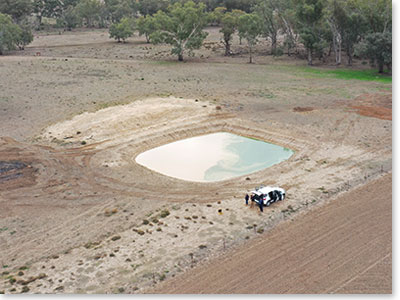 Dubbo Local Court
Dubbo Local Court
Concluded March 2020
Offence: A Dubbo landholder took water without a licence, extended a dam without approval and ignored a direction by NRAR to empty the dam and remove it.
The offences took place between 2015 and 2019.
Outcome: The landholder was fined a total of $18,900 comprising $9000 for the water take, $5400 for the dam extension and $4500 for not complying with the direction to empty and remove the dam. He was also ordered to pay prosecution costs of $30,000, publish the details of the case in The Land or a local newspaper, and empty and remove the dam.
Harm: It was alleged that the landowner took 36.986 ML of water.
Want to know the rules?
Water is a finite resource and other than exemptions, such as for stock and domestic or native title rights, access in NSW is controlled by the issue of water access licences to ensure all users get fair access. If a user takes water that has not been allocated to them, there may be less water available for other users downstream.
It is an offence to take water without a licensed entitlement.
Works that are constructed to store water that is taken under licence, such as dams, need approval to ensure they don’t harm water sources or the animals and plants dependent on them. Approvals are issued in line with the associated water licence to ensure works don’t affect access to water by other water users.
It is an offence to construct or use water supply works without an approval.
When NRAR finds unapproved works, we may serve a statutory direction to the owner for the works to be removed, restoring the unlicensed water to the environment.
It is an offence to not comply with such a direction issued by NRAR.
Find out more about water access licences and water supply work approvals and which agency you should contact to obtain a licence and/or approval if needed or find out more about NRAR’s regulatory response to non-compliance.
Case study: Works undertaken on Crown land beside a Marine Park
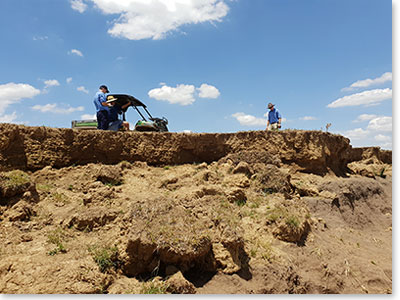 Batemans Bay Local Court
Batemans Bay Local Court
Concluded February 2020
Offence: An individual was convicted of two offences regarding works undertaken on waterfront land in the Eurobodalla Shire. The individual cleared vegetation, deposited material and built a boat ramp between 2016 and 2018 on a site on the Clyde River.
The site was not only adjacent to a Marine Park, it was also on Crown Land.
The defendant knew he did not own the Crown Land, and that there were special regulations that applied to works done on this land because it was in a Marine Park . The magistrate said the defendant should also have known that any works on waterfront land require approval.
Outcome: The magistrate said in convicting the defendant he was not only sending a message of deterrence to him, but to the community at large, that compliance with environmental laws was important.
The defendant was ordered to pay a fine of $7,500 per offence – a total of $15,000.
The magistrate accepted he showed genuine remorse, and because he entered a guilty plea at an early opportunity, gave him a 25% discount on sentence. If he had not entered the early guilty pleas, he would have imposed fines of $10,000 per offence.
Harm: The harm included clearing of 545m2 of woody native vegetation and potential pollution from erosion and excavation at the site into the Clyde River and Marine Park.
Want to know the rules?
In its simplest term waterfront land is defined as the bed of a waterway and the land 40m from the mean high bank. Undertaking work on waterfront land can threaten the health of the waterway, presenting risks to ecosystems and impacts on other water users up and down stream.
To protect our waterways, work on waterfront land that might alter water flows or lead to erosion are defined as controlled activities and require prior approval. Examples of controlled activities would be construction of retaining walls, buildings or crossings, and works that involve excavating or depositing of materials, such vegetation removal, channel realignment and sand and gravel extraction.
Approvals will contain conditions to minimise impacts on the waterway and adjoining land.
It is an offence to carry out controlled activities without an approval. Find out more about controlled activity approvals.
Case study: Unauthorised works on waterfront land
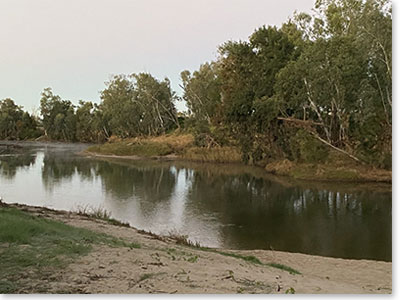
Lithgow Local Court
Concluded February 2020
Offence: A landholder in the Bathurst area removed material from waterfront land, and deposited other material there.
The actions were taken in early 2017 in an attempt to reduce the risk of flooding. Such activities require a controlled activities approval.
Outcome: The landholder was fined $4,000 for each offence, making a total of $8000, which was a 20 per cent discount on the original fine due to his relatively early guilty plea. He was also ordered to pay professional costs of $7000 and publish the details of the case in a local newspaper.
Harm: While an environmental report submitted by the defendant argued there was no significant damage or harm to the environment caused by the works, and the landholder had since taken steps to rectify his wrongdoing, the magistrate said general deterrence was an important factor in sentencing cases such as this, and that any fine had to be substantial enough to change the economic calculations of compliance.
Want to know the rules?
In its simplest term waterfront land is defined as the bed of a waterway and the land 40m from the mean high bank. Undertaking work on waterfront land can threaten the health of the waterway, presenting risks to ecosystems and impacts on other water users up and down stream.
To protect our waterways, work on waterfront land that might alter water flows or lead to erosion are defined as controlled activities and require prior approval. Examples of controlled activities would be construction of retaining walls, buildings or crossings, and works that involve excavating or depositing of materials, such vegetation removal, channel realignment and sand and gravel extraction.
Approvals will contain conditions to minimise impacts on the waterway and adjoining land.
It is an offence to carry out controlled activities without an approval. Find out more about controlled activity approvals.
Case study: The need to follow directionsCase study: The need to follow directions
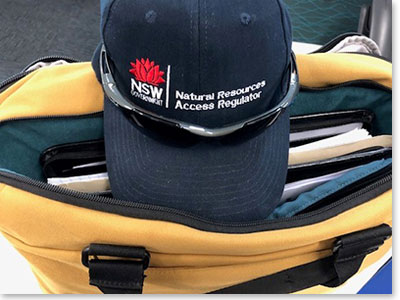
Moree Local Court
Concluded September 2019
Offence: A Moree area farmer was prosecuted for constructing a levee without an approval, and failing to comply with a direction to remove the levee.
He constructed the levee after a flood in 2016 destroyed his crop. He was directed twice to remove the levee but did not, instead extending it after the first direction.
Outcome: While the magistrate found the defendant’s moral culpability to be quite high because he undertook the work without approval and did not stop work on it or remove it when directed, he also stated that the defendant did not undertake the work to deprive others or remove water and was not motivated by self-interest.
While the defendant was found guilty, no conviction was recorded or penalty imposed due to other significant circumstances of the case. The defendant was however given a conditional release for two years which included the conditions that he pay the prosecution’s costs of $10,000 and remove the levee within 60 days.
The magistrate said the order to pay the prosecution’s costs was because the defendant had twice ignored a direction regarding the levee, which left the water regulator with no choice but to prosecute.
Harm: There was potential for harm from the levee by unauthorised diverting of floodwaters, potentially harming neighbouring properties, but no evidence of actual harm due to there being no floods during the period the levee was in place.
Want to know the rules?
Works that might affect the natural flow of water to or from a water way, or affect the distribution of flow of water in times of flood, are classed as flood works. Levees, barrages, causeways, cuttings and embankments are examples of flood works and regardless of their intended purpose, must be approved prior to construction.
Changing the natural flow of water, particularly flood waters, presents a risk to ecosystems but also to humans and their property. The approval process ensures the potential for negative impacts and risks is controlled and minimised.
It is an offence to construct or use flood works without an approval. Find out more about flood work approvals and which agency you should contact to obtain an approval if needed.
Case study: Maximum fine for works on waterfront land
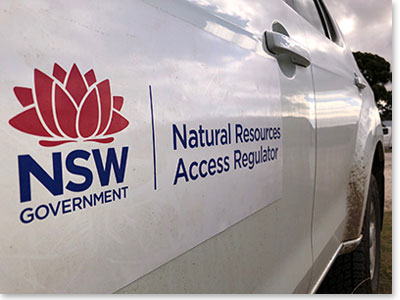 Raymond Terrace Local Court
Raymond Terrace Local Court
Concluded August 2019
Offence: A Port Stephens area company removed vegetation on three sites on a creek and deposited rock and turf at one of the sites without approval.
The unauthorised works were carried out on a creek which drains into Fame Cove in the Port Stephens-Great Lakes Marine Park, between 2014 and 2016.
Outcome: The magistrate said it was important the public understood that the work of the regulator would be taken seriously, and appropriate sanctions would be imposed by the courts.
The company was found guilty on four charges relating to the works on waterfront land and fined $22,000 for each charge – the maximum penalty possible, totalling $88,000. It was also ordered to pay professional costs of $20,000 and publish the details of the case in two local newspapers.
Harm: Unauthorised works can cause instability of stream banks, soil erosion and an increase in sediment, as well as destruction of habitat. Approvals ensure works are done in a way that minimises harm to the waterway, other water users and the environment.
Want to know the rules?
In its simplest term waterfront land is defined as the bed of a waterway and the land 40m from the mean high bank. Undertaking work on waterfront land can threaten the health of the waterway, presenting risks to ecosystems and impacts on other water users up and down stream.
To protect our waterways, work on waterfront land that might alter water flows or lead to erosion are defined as controlled activities and require prior approval. Examples of controlled activities would be construction of retaining walls, buildings or crossings, and works that involve excavating or depositing of materials, such vegetation removal, channel realignment and sand and gravel extraction. Approvals will contain conditions to minimise impacts on the waterway and adjoining land.
It is an offence to carry out controlled activities without an approval. Find out more about controlled activity approvals.
Case study: Both landholder and contractor found guilty
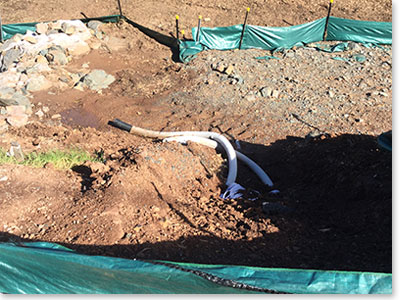 Albury local Court
Albury local Court
Concluded December 2018
Offence: A Corowa landholder and a contractor employed by him were both convicted of carrying out works on waterfront land without a controlled activity approval.
The owner of the land on the Murray River was found guilty of three offences, and the contractor of one offence.
The unlawful works included the construction of a 45m retaining wall and concrete steps, and the depositing of sleepers, concrete, sand and turf on the site.
Outcome: The landowner was fined $15,000 and the contractor $7500, a warning to contractors to check that the work they have been employed to do has approval. The fine amounts reflected a 25 per cent discount, granted as both parties entered early guilty pleas.
The landowner and contractor were also ordered to pay professional costs of $5000 each and publish the details of the case in a local newspaper.
Harm: The local council had indicated a permit was required for the proposed works but would not be issued until issues with erosion control, impact on threatened species, impact on fish habitat and protection of native vegetation were addressed. These issues were not addressed before the work commenced.
Subsequently undermining and subsidence of backfill took place, leaching into the watercourse. Also clearing had affected fringe vegetation, affecting the ability of the watercourse to rehabilitate and re-establish healthy eco systems. These effects were also likely to affect water quality.
Want to know the rules?
In its simplest term waterfront land is defined as the bed of a waterway and the land 40m from the mean high bank. Undertaking work on waterfront land can threaten the health of the waterway, presenting risks to ecosystems and impacts on other water users up and down stream.
To protect our waterways, work on waterfront land that might alter water flows or lead to erosion are defined as controlled activities and require prior approval. Examples of controlled activities would be construction of retaining walls, buildings or crossings, and works that involve excavating or depositing of materials, such vegetation removal, channel realignment and sand and gravel extraction. Approvals will contain conditions to minimise impacts on the waterway and adjoining land.
It is an offence to carry out controlled activities without an approval. Find out more about controlled activity approvals.
In this case both the landowner and the contractor were found guilty because where a person causes, conspires or in some ways assists another person to commit an offence, the courts may find that person guilty of that same offence and they can be liable to the same penalties. Find out more about NRAR’s regulatory response to non-compliance.
Case study: The need for approvals
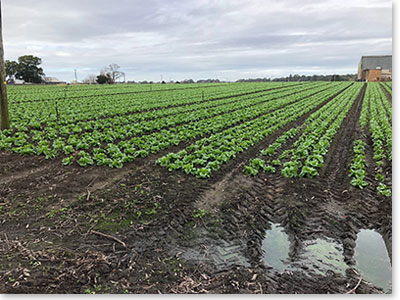
Land and Environment Court
Concluded October 2018
Offence: A market gardener operating on Nepean River properties in the Liverpool City Council area used water for a purpose different to that he had received approval for, used a water supply work without approval, tampered with a meter, and failed to comply with a direction.
Outcome: While the original penalties imposed totalled $40,000, on appeal they were reduced to a total of $24,000 due to an early guilty plea, cooperation with the prosecutor and a lack of evidence of harm caused, except to the regulatory system.
Harm: see above.
Want to know the rules?
Water supply work and water use approvals are required to take and use water for many purposes, for example a pump used to extract water from the river to irrigate a commercial crop would need a water supply works and water use approval, usually given as a combined approval.
All approvals include conditions designed to minimise impacts of the works and intended use on the water source and other users.
It is an offence to use water or a water supply work without approval, or in a way that is different to what was approved.
When NRAR finds unapproved works or water take, we have a range of statutory directions that can be issued to bring the activity into compliance, for example removing the works or stopping the use of water.
It is an offence not to comply with a direction issued by NRAR.
Find out more about water supply work and water use approvals and which agency you should contact to obtain an approval if needed. Find out more about NRAR’s regulatory response to non-compliance.
Case study: False information leads to conviction
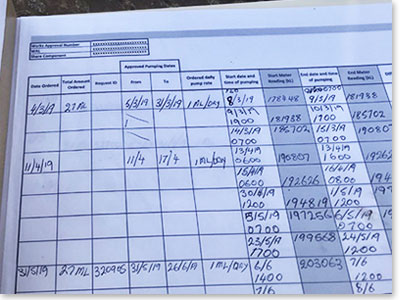 Walgett Local Court
Walgett Local Court
Concluded October 2018
Offence: A farm manager from the Walgett local government area provided false and misleading information to investigators regarding the keeping of a logbook.
Outcome: The magistrate said the offence required a sharp penalty to send the message that there were consequences for being dishonest.
The manager was fined $1000 and ordered to pay $5500 professional costs and separate court costs. He was also ordered to publish a notice with the details of the case in either The Land or the Moree Champion.
Harm: While the false and misleading information did not impact on the investigation, it had the potential to do so and for this reason it was important to deter this behaviour.
Want to know the rules?
During an investigation an authorised officer may request records or information. It is an offence to knowingly provide false information or make false statements to the officer. Find out more about NRAR’s compliance powers.
Charges dismissed or withdrawn
NRAR has brought 38 cases before the courts since its establishment in April 2018 (as of May 2023). Out of the 32 cases concluded so far, 23 have resulted in convictions. Two were dismissed, one was found not guilty, five were withdrawn and one was withdrawn and dealt with as an enforceable undertaking.
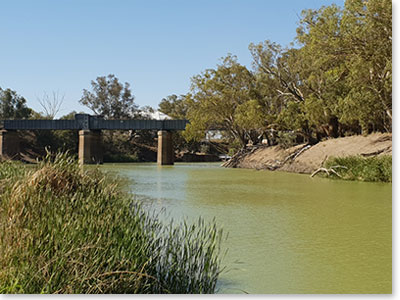 While a prosecution will only be commenced if legal advice indicates there are reasonable prospects of conviction, there is never a guarantee of a successful outcome as charges must be proved beyond reasonable doubt. NRAR will always strive to ensure its enforcement actions, including prosecutions, are targeted, proportionate, consistent, fair, and considered in a timely fashion.
While a prosecution will only be commenced if legal advice indicates there are reasonable prospects of conviction, there is never a guarantee of a successful outcome as charges must be proved beyond reasonable doubt. NRAR will always strive to ensure its enforcement actions, including prosecutions, are targeted, proportionate, consistent, fair, and considered in a timely fashion.
When we have a loss or where charges are dismissed, we consider the implications for current or future prosecutions to help build stronger cases in the future.
Releasing the results of all our prosecutions, successful or otherwise, provides transparency on NRAR’s activities and draws attention to the consequences of breaking the law, thereby encouraging compliance.
NRAR has a mandate to enforce NSW water laws and we will continue to actively do so, inside the courtrooms of NSW and out in the field across regional and metropolitan NSW.
Land and Environment Court
Concluded August 2022
Offence: Two landholders from the Walgett area were charged with offences for pumping outside flow conditions and for failing to comply with a direction to install and maintain metering equipment.
Outcome: The pumping charges were withdrawn on the basis of logbook inaccuracies and expert advice regarding gauging, and the direction charges were withdrawn on the basis of the defendants’ ability to comply with the direction.
Land and Environment Court
Concluded June 2022
Offence: Two landholders from the Bourke area faced three charges relating to water take outside flow conditions of approval between December 2016 - May 2017, and one charge of exceeding water share allocation limit for the 2016-17 year.
Outcome: The charges were withdrawn due to evidentiary difficulties as a result of record keeping challenges.
Land and Environment Court
Concluded June 2022
Offence: A landholder and a manager from the Moree LGA were charged with a total of 15 offences relating to allegedly taking water outside of flow conditions.
Outcome: the charges were withdrawn because the Court ruled that the evidence was inadmissible.
Land and Environment Court
Concluded July 2020
Offence: Two landholders from the Walgett area were each charged with three counts of taking water without a functioning meter.
Outcome: The Judge found the charges were not proven beyond reasonable doubt and so were dismissed. See the case here: Caselaw
Tamworth Local Court
Concluded December 2020
Offence: Two landholders had five charges brought against them by NRAR of contravening the terms of their water licence in two locations in the Tamworth area during 2018.
Outcome: The charges were regarding taking water from a weir at a time of no visible flow. The magistrate found the charges were not proven beyond reasonable doubt and so were dismissed. The Court found that photographic evidence showing no flow over the weir from a static camera was not proven beyond reasonable doubt:
1. because the process by which the camera maintained by RMTeK captured photographs of the weir wall surface was very complex, with multiple steps
2. because there was no evidence that there was provision for audits or reliability checks to be undertaken
3. because the company that was contracted to take them went into liquidation in mid-2019, it could not be satisfied that that element was made out beyond reasonable doubt.
Walgett Local Court
Concluded September 2020
Offence: A company operating in the Walgett area was charged with taking water when metering equipment was not operating, and failing to ensure proper operation of metering equipment.
Outcome: The proceedings were withdrawn due to an outcome in a previous Land and Environment Court case, and there was no order as to costs.
Moree Local Court
Concluded September 2020
Offence: Nine charges of taking water outside the flow conditions between December 2016 and May 2017 were alleged against companies from the Moree local area.
Outcome: The proceedings were withdrawn due to new information being produced in November 2021.Land and Environment Court
All images on this page are for illustration purposes only.